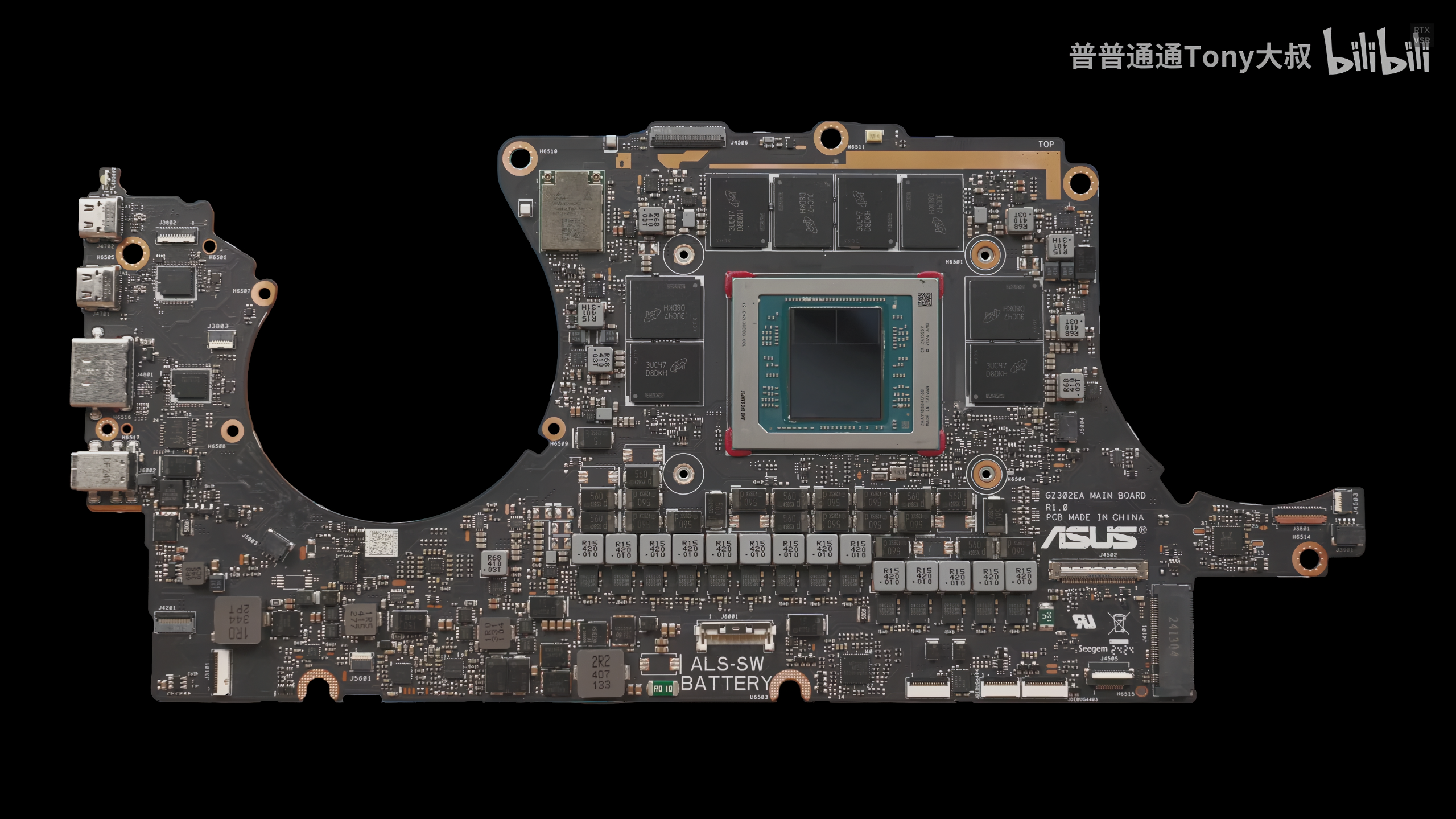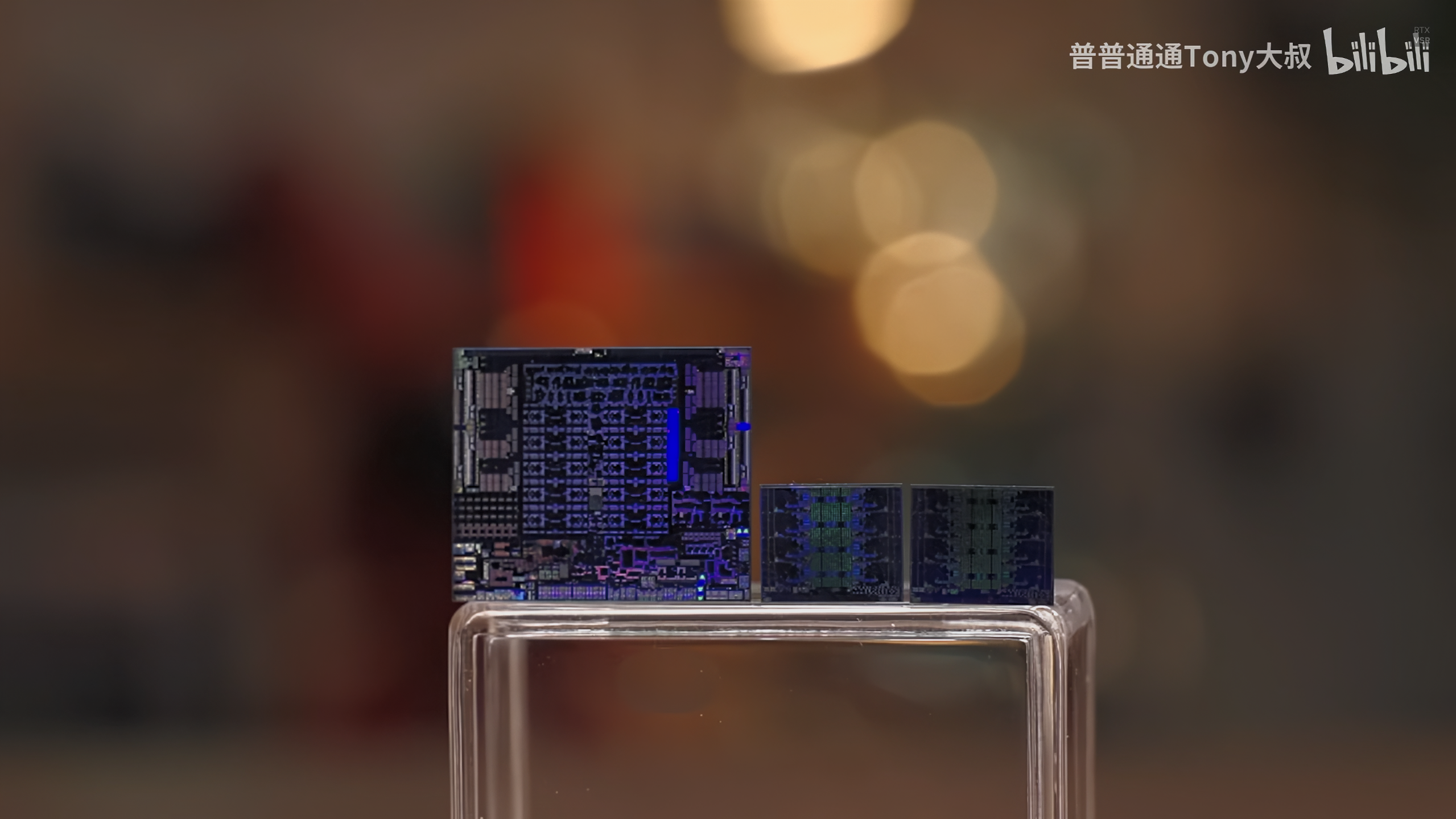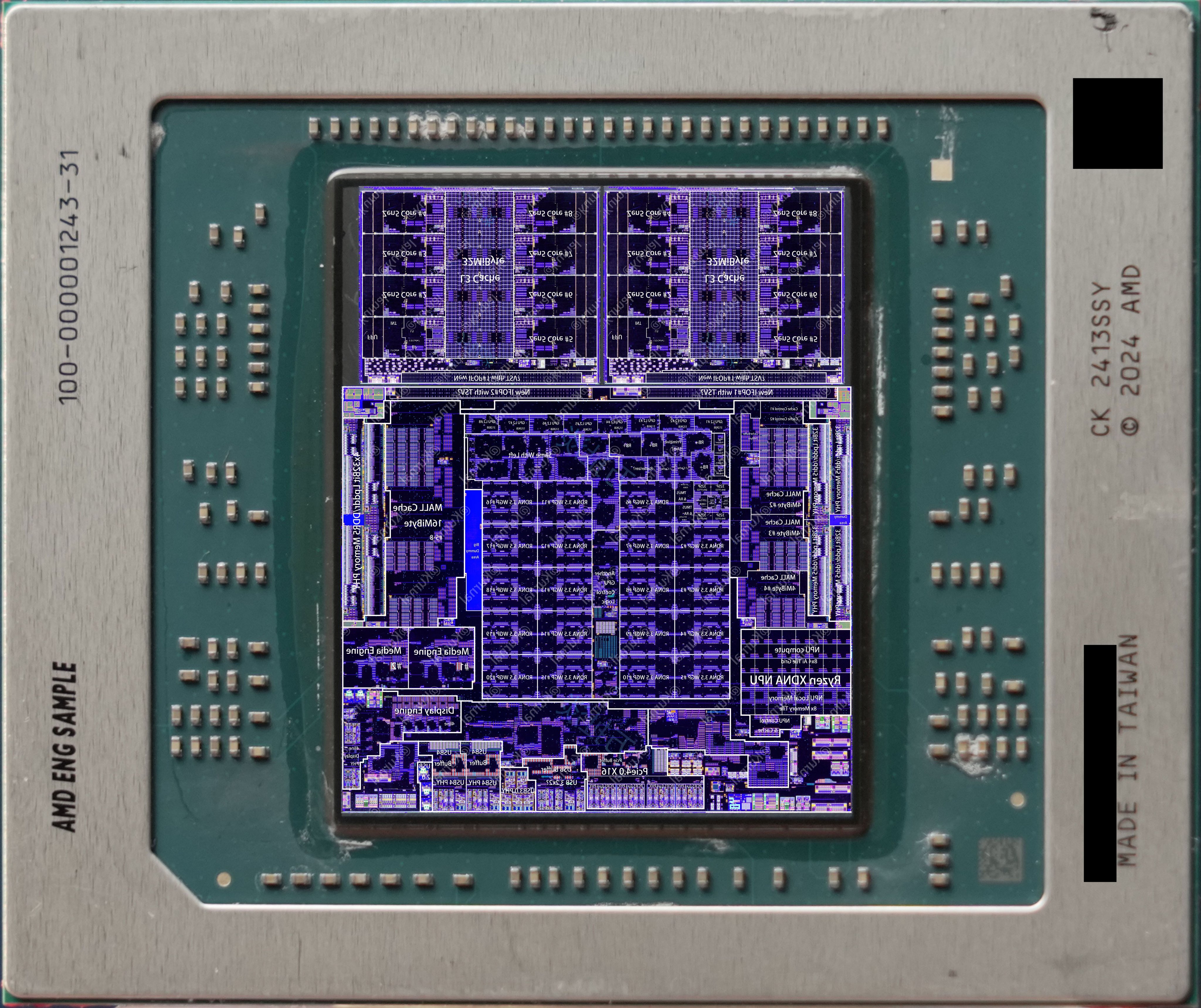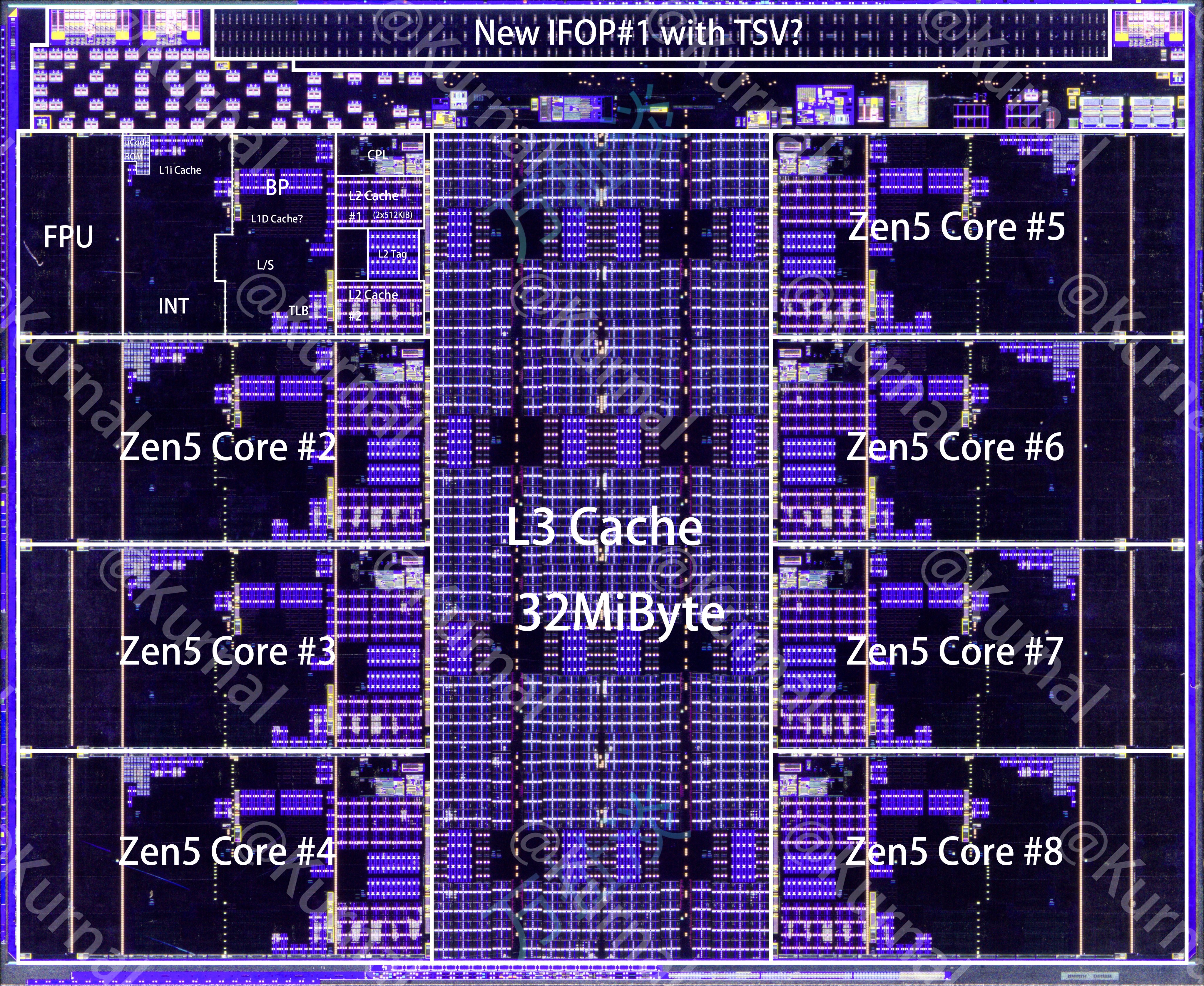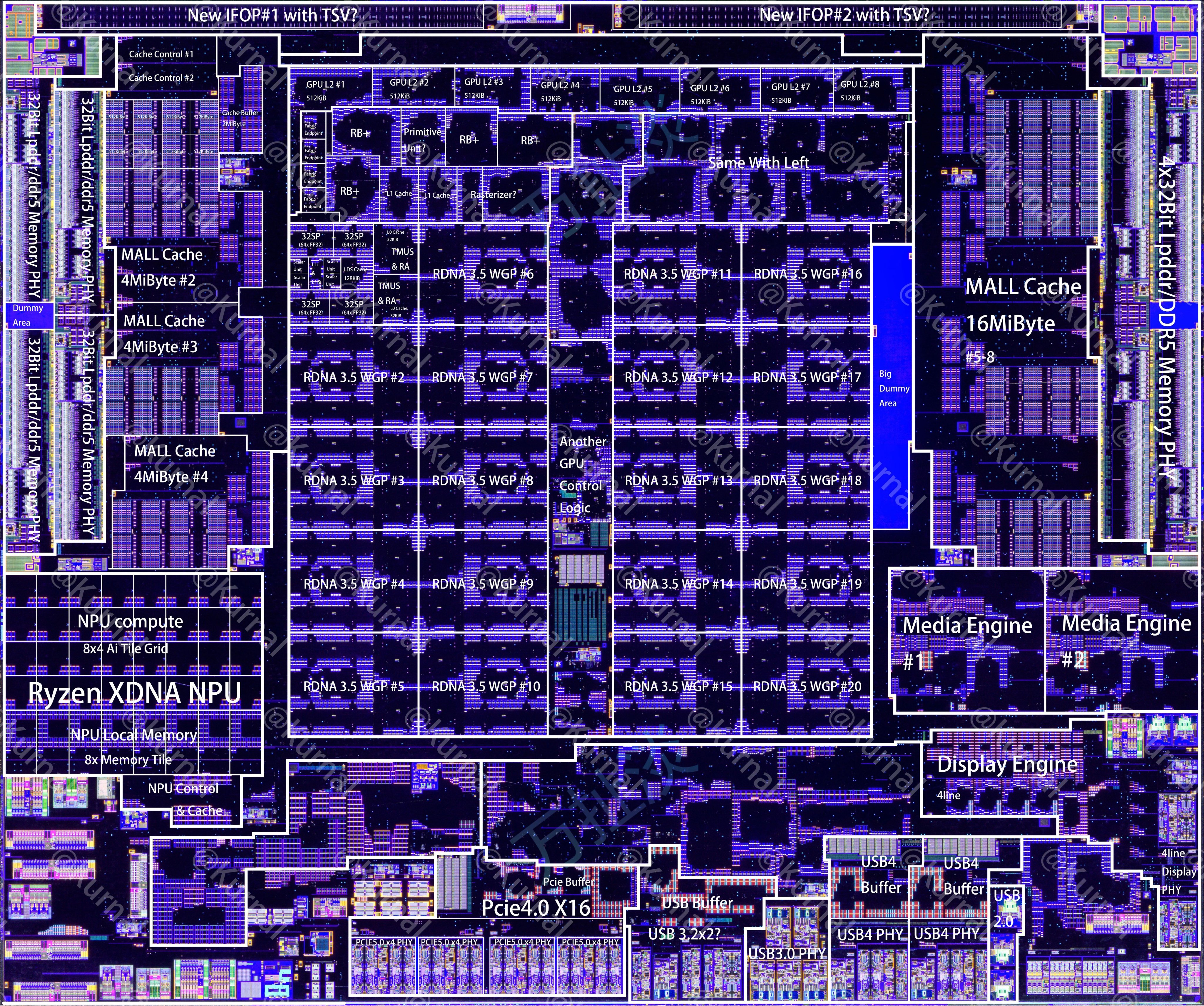AMD's game-changing Strix Halo APU, formally known as the Ryzen AI Max+, poses for new die shots and gets annotated
441mm² design holds 16 cores, 40 CUs, and 128GB of memory
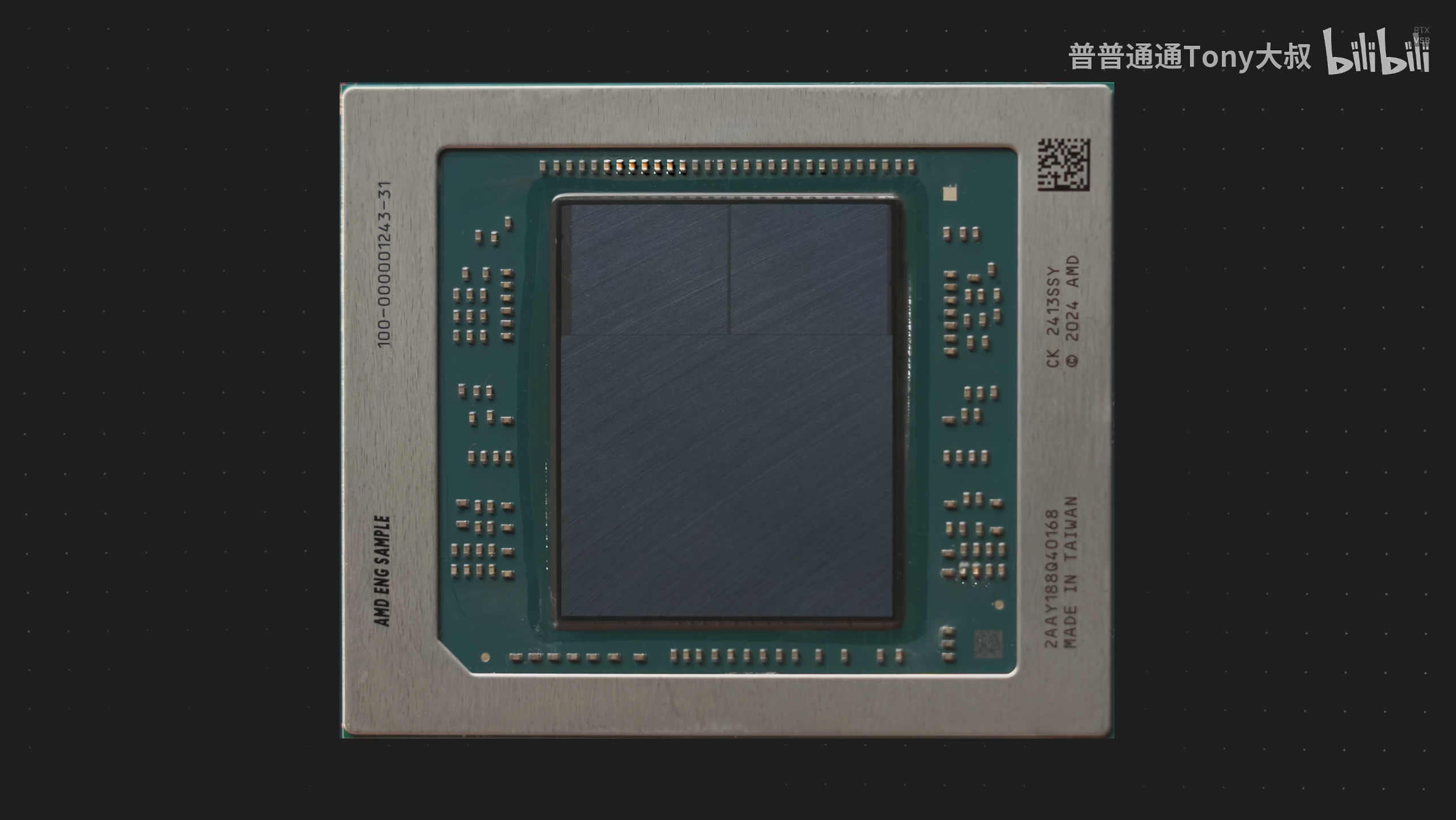
AMD's Strix Halo reviews are no longer guarded by an embargo. So we're seeing a wave of new die shots that underline the impressive engineering that went into the design of these chips. Thanks to Kurnal, Asus' Tony Yu (at Bilibili), and Decap at X (formerly Twitter), we're getting our first look at the internals of Strix Halo, formally known as Ryzen AI Max.
Let's get one thing straight: Strix Halo isn't your average run-of-the-mill APU. It wields 16 cores and 32 threads based on the latest Zen 5 architecture, alongside a massive 40 CU (Compute Unit) iGPU (integrated GPU). The package itself is composed of two Zen 5 CCDs, which are a tad different from the ones you see on Granite Ridge (Ryzen 9000 CPUs). Surrounding the chip are up to eight memory ICs, enabling support for 128GB of unified memory.
Thanks to high-res images from Tony Yu, we see that AMD has trimmed the D2D (Die to Die) interfaces between the CCD and I/O die by roughly 2mm. Although the CCDs have been tweaked slightly at 67.07mm2, they still support 3D V-Cache, evidenced by the TSV connections in the die shots. The rest is similar to what you'd typically find on a desktop Zen 5 processor. Each of the eight cores carries 8MB of dedicated L2 cache, with a shared 32MB L3 pool in between.
Beneath the two CCDs lies a large I/O die that hosts the uncore part of the chip. The bulk of the 307.58mm2 die size is occupied by the 40 Compute Unit integrated GPU (20 WGPs) developed using RDNA 3.5.
Slapping on more cores is only beneficial if they can be fed with data. We've seen firsthand how the performance of Strix Point (with 16 CUs) was hampered due to memory bottlenecks. AMD has taken a two-pronged solution to counteract this issue, with fast LPDDR5X memory across a wide 256-bit interface (eight 32-bit controllers) to the sides of the chip, and 32MB of MALL (Memory Access at Last Level) or LLC (Last Level Cache) split evenly across both sides of the iGPU.
To the left of the iGPU lies the XDNA 2 NPU (Neural Processing Unit), enabling 50 TOPS of AI performance, claimed to outclass even the RTX 4090. Some locations have been left unmarked. Either way, the bottom of the I/O die features a single PCIe 4.0 x16 interface, alongside USB 4 (40 Gbps), USB 3.2 Gen 2, and USB 2.0 controllers, followed by a Display Engine and two Media Engines with support for H.264, H.265, and AV1 codecs. Based on the provided statistics, the full chip equals roughly 441.72mm2 or allegedly 475mm2. That's including what appears to be structural silicon.
The first laptops powered by Strix Halo should hit shelves later this month, with Asus' ROG Flow Z13 tipped for a February 25 launch. While OEMs have initially been hesitant to jump on board with these chips, adoption is likely to improve, despite a slow initial uptake.
Stay On the Cutting Edge: Get the Tom's Hardware Newsletter
Get Tom's Hardware's best news and in-depth reviews, straight to your inbox.

Hassam Nasir is a die-hard hardware enthusiast with years of experience as a tech editor and writer, focusing on detailed CPU comparisons and general hardware news. When he’s not working, you’ll find him bending tubes for his ever-evolving custom water-loop gaming rig or benchmarking the latest CPUs and GPUs just for fun.
-
heffeque There are benchmarks of the Asus laptop.Reply
TDP is limited below what the chip can use, but performance is still great.
What worries me most is pricing.
$2500 for the 32 GB version seems extremely excessive, even if performance is as good as a 4070 laptop on same TDP.
Hopefully there will be 64 GB and 128 GB versions with full TDP usage for mini-PC out there that aren't stupidly expensive. -
GenericUser2001 Looks really good; personally I am hoping they will get the 8 core, 32 CU version into mid-range gaming laptops soon enough. 16 cores is overkill for my needs.Reply -
HideOut Holy worn out expressions bat man. I feel like Im listening to some BS from Steven A Smith on ESPN. Continuuously saying "game changa". Its a new laptop that in every review today is sitll a bit behind the M4 in many categories. Keep in mind, apple has likely either a "bigger" M4 if needed, but more than likely just a fem months from the m5 reveal. This is the most powerfull X86 moble to day, but its not a game c hanger. its maybe at best "somewhat catching up, for 20 more watts".Reply -
JamesSneed Reply
You could only fit so many transistors on a die so dedicated it was. Now we have density and power reductions due to the latest TSMC nodes and its all possible. Apple did this a bit sooner than AMD but still all of it hinged on being able to make a CPU and GPU powerful enough that fit in the power envelope of a laptop. This will make laptops what they should have been all along(we know because we have the mac's to prove it).Gururu said:I never understood dedicated graphics in laptops. This is the future. -
usertests Reply
What would be great is if we could add memory ourselves. If it's limited to LPDDR5X, then LPCAMM at least exists. How can quad-channel be handled? Maybe two stacks of two CAMMs, but I don't know if stacked CAMM has been implemented anywhere or merely suggested by JEDEC.heffeque said:Hopefully there will be 64 GB and 128 GB versions with full TDP usage for mini-PC out there that aren't stupidly expensive.
Hopefully AMD learns some lessons from Strix Halo and comes out swinging with Medusa Halo a couple years from now. -
markhahn I hope the yields are terrible, so it becomes worthwhile to sell bins with fewer cores and CUs - heck, even half-functional LLC.Reply
Gamers may wet themselves, but the prospect of two CCXs over a lower-latency link, and 256b memory is exciting for a much TAM, even with the GPU binned way down. -
Gillerer Reply
They wouldn't waste two functional CCXes on a heavily cut down I/O / graphics die. You'd get the gaming version; just 8 cores on a single CCX. And only two memory channels for the lowest model.markhahn said:I hope the yields are terrible, so it becomes worthwhile to sell bins with fewer cores and CUs - heck, even half-functional LLC.
Gamers may wet themselves, but the prospect of two CCXs over a lower-latency link, and 256b memory is exciting for a much TAM, even with the GPU binned way down. -
bit_user Reply
Sounds like someone is jealous of the attention it's getting?HideOut said:Its a new laptop that in every review today is sitll a bit behind the M4 in many categories.
It has more P-cores than even a M4 Max, which is a 12P + 4E configuration. And it has full AVX-512, whereas the M4 has a basically non-functional subset of SVE + 128-bit NEON. So, it's got some things going for it. Not to mention properly-supported native Linux.
